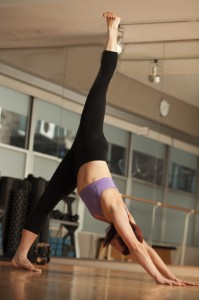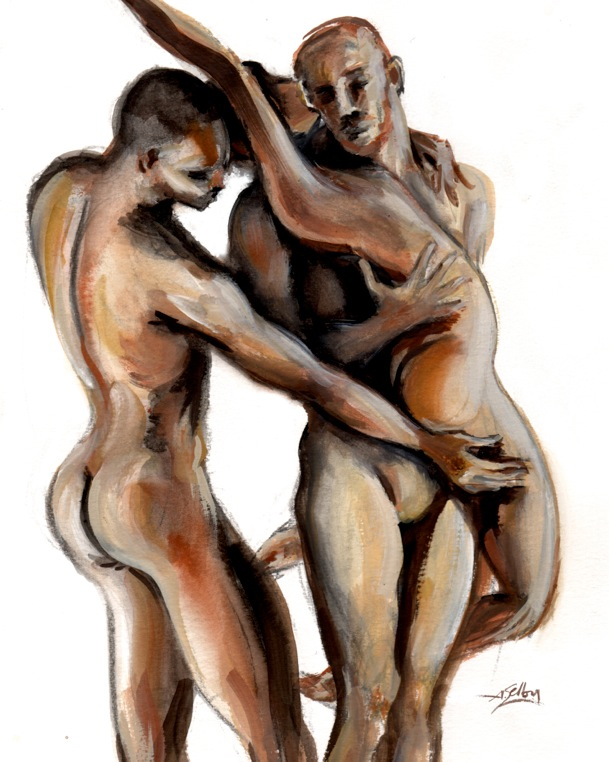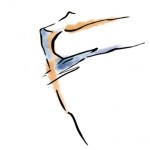The May blog comes from “The Barre Flies” and in particular, this month is written about the Pilobolus Dance Theatre — always one of my favorite dance troupes. The writing credits go to Eliza Minden of Gaynor/Minden. Read on:
“My neighborhood is so buff and body-conscious that even the dogs wear muscle shirts. Chiseled, pumped-up physiques are commonplace here in Chelsea, as are the many gyms where such bodies are created with arduous daily workouts, ever-more esoteric equipment, and precisely formulated, vitamin-fortified smoothies. But when Pilobolus comes to the Joyce they bring bodies — both male and female — that put the gym-rats to shame. These bodies not just impressive to look at, they possess breathtaking flexibility and balance skills. Moreover, unlike my neighbors (and their dogs), they wear their physiques lightly. Onstage they are utterly self-effacing — like the greatest ballet dancers they make it look effortless and graceful.
Do they cross-train? Lift weights? Swing kettle bells? Is there some company class that builds and maintains such strength? Not at all. What the Pilobolus dancers do is just that demanding. Their zen-like serenity onstage belies the difficulty of their work. Like ballet dancers, they make it look so easy that no one appreciates how hard it really is.
In my favorite pieces they use each other’s bodies as human levers to create fantastic living sculptures that merge and cleave. They rely in part on a weight sharing technique that can be found in other forms of dance but that Pilobolus developed and theatricalized in its own way.
 I spoke with Beth Lewis, who toured with the company for five years and who still performs with it from time to time. “Weight sharing with a man is difficult because the amount he pushes is the amount the woman has to push back.” And referring to their signature cantilevers, “Also, the body doesn’t rest in space at a 45° angle without any effort. You have to engage everything in your body to make this happen, all while making it look pretty. It’s insanely difficult.”
I spoke with Beth Lewis, who toured with the company for five years and who still performs with it from time to time. “Weight sharing with a man is difficult because the amount he pushes is the amount the woman has to push back.” And referring to their signature cantilevers, “Also, the body doesn’t rest in space at a 45° angle without any effort. You have to engage everything in your body to make this happen, all while making it look pretty. It’s insanely difficult.”
Okay, so it’s incredibly hard. But is it really dance? Is it art? Does that matter? “I think everything is dance,” said Lewis, “walking down the street can be a dance. We can take pedestrian ideas and make them into an interesting work that we can call dance. We make shapes out of people while moving through seamless transitions. We move together as a unit to create something sculptural and beautiful to look at. “
Dance was only part of Lewis’s athletic training. She was a competitive swimmer and gymnast, and a long-time practitioner of tai kwon do. As a college dance major she did extensive aerial work with trapeze and silk. Dance is not necessarily a requirement for becoming a member of Pilobolus, though many do have some dance training. According to Lewis the requirement is having something to contribute to a collaborative process that’s based on improvisation and play. The diversity of their backgrounds just enriches the work.
“With Pilobolus you’re not seeing a show you’re experiencing art—experiencing physicality, theater, and process. You’re seeing what each dancer has gone through to create that piece.”
Lewis now teaches some of the physical skills required of being a “Pil” to a clientele ranging in age from 14 to 81. She prefers “movement specialist” rather than “trainer” as her job description. Her workouts look like play but result in increased strength, mobility, balance, and as she puts it, “walking through life with a little more grace.” (They also result in exhaustion and soreness in previously unknown muscles.) She helps clients achieve kinesthetic awareness — knowing where the body is in space — through Pilobolus-based weight sharing along with more conventional devices. “Anything you can do to make it trickier, and to make your environment more unstable, makes your body work harder to create that stability.”
Over the past forty years Pilobolus has created a body of work that is by turns exhilarating, provocative, goofy, and hauntingly beautiful. They’ve become more polished — some would say slick — but the work retains its quality of having originated in playful group improvisation. It’s harder on the dancers to work this way: there’s no rest and no familiar structure of tendus and pliés to fall back on.
Most pioneering dance companies, once they’ve hit 40 and established themselves, would consider codifying their technique and creating a vocabulary for their steps and positions. I asked Lewis if Pilobolus should do so, “No,” she says, “that’s not the way Pilobolus rolls.”

